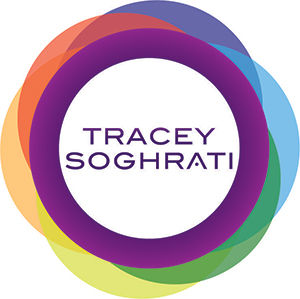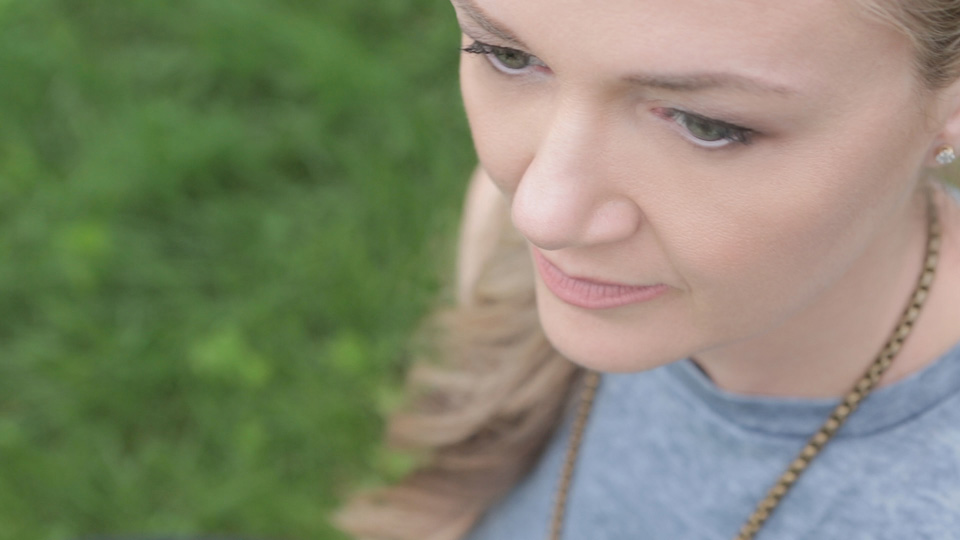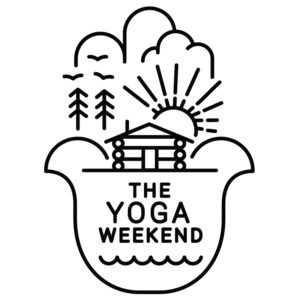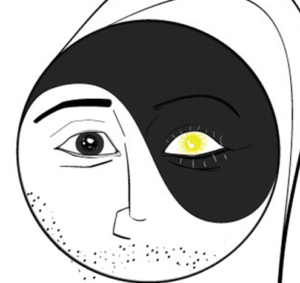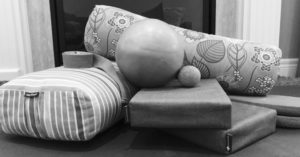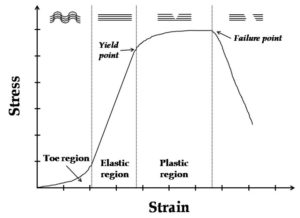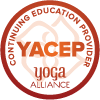What is Yin Yoga?
Whether you are a new or seasoned yoga practitioner, the names of yoga classes on any given studio schedule can be confusing. In light of this, I will attempt to answer some of the key questions I’ve received about yin yoga over the course of teaching this practice and running a yin yoga teacher training. (More information on the training at: www.soghratiyoga.com)
What’s in a Name? Why call it Yin Yoga?
First of all, it’s important for practitioners to understand that different styles of yoga may represent how the yoga postures are taught, what lineage the teachers have studied in, the breathing practices, chanting and meditation incorporated, OR all of the above. Since yoga has evolved into a big business in North America, we have the more traditional styles of yoga (i.e.: iyengar, ashtanga, and viniyoga (from the last century) and hatha etc) as well as more modern styles, which include branded sequences that represent a specific community or individual. So, while the postures remain similar from style to style, the name tells us a bit about how the yoga is practiced.
The name “Yin Yoga” came from Sarah Powers. However, the practice of yin yoga itself is far from new. In fact, I’m sure that many people who practice yoga at home, have fallen into doing the postures this way over time. My first yoga classes at a community centre in the 90’s were called “hatha” and yet the way we practiced was almost the same as how I teach yin yoga now. So you may be practicing yoga in a yin way and not even know it!
So what does it mean to call something yin?
The terms “yin” and “yang” are labels that convey the polarities that occur in the natural world. Specifically, yin is “shady side of the mountain” and yang is “sunny side of the mountain”. To simplify this, think of the two labels as opposites – like hot and cold, light and dark, day and night. Things that are cool, hidden, dark and slow are traditionally labelled as yin in nature. Likewise, things that are warm, apparent, bright, and fast are traditionally labelled as yang in nature. If we apply this labeling system to yoga practices, we might say that faster styles of yoga are yang while slower styles of yoga are yin.
Of particular note, is the fact that a yin yoga practice often facilitates deeper understanding of the self, meditative calm and facilitation of the parasympathetic nervous system – and these things would all be in the “yin” category using the aforementioned labeling system.
What does a student experience in a Yin Yoga class?
As with any other style of yoga, each yoga class is as unique as the person teaching it, however there are some general things that every yin yoga class will incorporate:
- Almost all of the postures are practiced on the floor (or using the wall for support)
- Most of the postures target the hips, legs and spine
- The student finds an edge of therapeutic and non-threatening intensity in the posture, then stays for a period of time (2-5 minutes on average).
- The physical goal of the practice is to enhance range of motion that has been limited by our history, postural patterns, or previous injuries
- The postures are practiced in stillness (without reactive fidgeting)
- The student comes out of the posture slowly and carefully, resting briefly
- There is often a profound experience of both physical relaxation and emotional release and/or stability
Depending on the style and experience of the teacher there may also be:
- Meditation
- Pranayama
- Philosophy discussion
- Psychology discussion
What tissues are we targeting?
This is a really important question, because there has been a fair amount of controversy over yin yoga, in terms of efficacy and safety. If you read most of the print or on-line information about yin yoga, writers indicate that this practice targets connective tissue and joints, rather than muscular tissue.
Connective tissue (CT) does exactly as its name implies – it connects things together – cells, layers, organs etc. In the study of anatomy, we have broken things down, or separated them in order to facilitate our own understanding. So, historically speaking, dissection led to classification of different types of connective tissue into categories according to both location and function(i.e.: tendons, ligaments, fascia etc…). By reducing this tissue into different “parts” our focus was taken away from how it functioned as a whole – and modern research is identifying that CT is best understood as a whole unit.
The Controversy:
If we divide CT into tendons, ligaments, fascia etc… and we say that yin yoga targets these tissues at the joint specifically, we immediately create misunderstanding. My greatest discussions about this misunderstanding have been with orthopedic surgeons who spend a great deal of time repairing joints. These professionals understand that the connective tissues surrounding a joint provide both encapsulation and protection. So, in their minds, direct stretching of a ligament that is supposed to be taut and protecting a joint, is immediately injurious. And they are correct.
So the question (in my mind) is; are we explaining this practice correctly?
A Shift in Perspective:
One of the most beautiful and clear texts on the connective tissue matrix is Thomas Myers: Anatomy Trains. In this manual, CT is examined as a whole with areas that become thicker or tougher due to patterns of use and function. Moreover, Myers identifies certain pathways or “meridians of CT” which when manipulated by manual therapists can provide system wide relief, healing and/or increase in ROM (Please note that I am greatly simplifying this information – it is important to follow this article up by reading the text for greater understanding – or even better, check out his excellent YouTube videos).
So rather than reducing the body to the sum of its parts (a reductionist view), this view of CT looks at the body as a unified whole. Within this context, the CT connects everything, (superficial to deep, head to toe), encapsulates everything and communicates with everything, by operating as a neuormyofascial web (or a web of tissue with localized specializations according to function, which contains over 600 pockets of muscle).
This “web” encapsulates the tiniest parts of us, slowly connecting layer upon layer until there is a unified an integrated whole. When we look at the body as a whole, it becomes obvious that if everything is interconnected, and if in fact individual muscle fibres are actually encapsulated by fascia, then it is impossible to target CT exclusively (meaning that there is some muscular stretch as well). Robert Scheip, an international researcher and authority on fascia found that certain types of stimulation will affect specific areas of fascia.
“The goal of the proposed fascial training is therefore to stimulate fascial fibroblasts to lay down more youthful fibre architecture with a gazelle-like elastic storage capacity. This is done through movements that load the fascial tissues over multiple extension ranges while utilizing their elastic springiness” (Schleip & Muller, 2012).
Schleip & Muller (2012) go on to say that fascial fitness is best accomplished through a combination of dynamic or ballistic stretching, muscular training and slow “melting” static stretches. Yin yoga is a form of slow static stretching; which is quite effective at enhancing range of motion, and/or relieving the body of restriction that is associated with previous injury or holding patterns. It seems to provide the best stimulation for extramuscular fasciae and the intramuscular fasciae oriented in parallel to the myofibers. (Scheip & Muller, 2012).
A final comment in relation to yin yoga & fascial tissues, is that the practice, by its very nature serves to hydrate the fascia. When the tissue is stretched, compressed or sheared, fluid moves out, when we come out of the posture and rest, the tissue is re-hydrated. This allows for movement of fluids, and potential toxins. Additionally it allows for additional fluid to be “bound” in the fascial “web or net” which creates a more healthy and youthful tissue. (Schleip & Muller, 2012).
So if I back up and look at the original question, “what are we targeting in a yin yoga practice?” My answer would be the myofascial web. I believe that joint range of motion is definitely enhanced as a side benefit of increasing overall range of motion in the tissues between the joints.
What is BioTensegrity?
This is a really hot topic right now, and it is directly relevant to our understanding of how the body is linked together, from head to toe, superficial to deep. There is tons of information online, however I will reference a review article that I found particularly useful (“Biotensegrity: A Unifying Theory of Biological Architecture With Applications to Osteopathic Practice, Education, and Research—A Review and Analysis” by Randall L. Swansan II, DO PhD. J Am Osteopath Assoc, January 1, 2013 vol. 113 no. 1 34-52).
“According to the tensegrity principle, structures are stabilized by continuous tension (tensional + integrity = tensegrity) with discontinuous compression. In contrast, most manmade structures are stabilized by continuous gravitational compression.” (Swansan, 2013)
Research into biotensegrity (mostly at the cellular level) has demonstrated that cells from their nucleus are linked to the extracellular environment, which then link to every other cell (through that relationship between the intra/extracellular environment of every cell). When forces are applied to the body (in yin yoga, think stretch or compression), a mechanical signal is produced (mechanotransduction) which is then coupled with chemical signals and leads to a cellular response.
This understanding of the architecture of the human body, allows us to comprehend how the form can experience myriad mechanical forces, disperse these forces and still retain its form (Swansan, 2013). Moreover, when we view the body as a tensegrity structure, it becomes evident that the force from one area is going to ripple into other areas, and conversely, lack of movement, adhesions or trauma to one area will restrict the rest of the tissues.
The Relationship between Yin Yoga & Traditional Chinese Medicine
There has long been a connective tissue hypothesis for acupuncture mechanisms. This hypothesis (loosely) is that the meridians of acupuncture actually exist in the fascial planes of the body. Thus, when we stretch, pressurize, shear, compress the fascia, via mechanotransduction, we would affect the way that chi (qi) moves in those meridians. Duncan McGechie wrote a great review article on this topic in the Journal of Chinese Medicine in June of 2010. His research found that this hypothesis has merit, however the current studies available aren’t significant enough to alter western medical views and practice.
What I find interesting personally, is that the holistic nature of TCM highlights the interrelationship between our physical and emotional selves. So any time we work with specific meridian pathways, we also work with aspects of the psyche. This is very consistent with my own experience during a yin yoga practice, as well as the reports I have received from students and other teachers over the years. It will be interesting to see how this hypothesis evolves over the next few decades.
Tony Tavares, a TCM practitioner is doing some excellent work on the relationship between Chinese Medicine and yin yoga www.norwoodholistichealing.com.
What are the Benefits of Practicing Yin Yoga?
Physical:
As discussed earlier in the article, this style of stretching will naturally increase flexibility in certain tissues in the body. This will likely lead to increased ROM, which can be accompanied by decreased pain. Practitioners also report feeling either deeply relaxed (perhaps the down-regulation of an overactive sympathetic nervous system) or reinvigorated and energized (increase in parasympathetic nervous system activity). Either way, students consistently report feeling more stable in terms of their nervous system.
Mental:
This is an area where the majority of students experience a huge shift. One of the basic things that yoga asks us to do is to connect to the present moment, to integrate there (breath, body, mind) and to act according to present circumstances with equanimity. While it is incredibly easy to write those words, the practice of actually doing this is so difficult that it seems impossible to many. Part of the problem is that connecting to the present moment may not be pleasurable. In fact, it might mean that we have to learn to tolerate NOW and relax our nervous system around “not knowing” and “not being in control”. Meditation is a fabulous place to begin to explore sitting with the mind, but I’ll be honest; I’ve been training teachers for a while now, and getting them to sit with themselves is often difficult. Now this is where yin comes in. People are able to experience 5 minute intervals of stillness, where a teacher can take them mindfully through the practice of watching the mind and its reactions without behaviorally acting them out. Students eventually notice that consistently doing this in their practice translates into the ability to be present with themselves in the rest of their lives – this changes everything.
Emotional
This area is profound for people too, and perhaps difficult to describe in a way that is accurate, scientific or evidence-based – but I’ll try. Yoga practitioners, dancers, people who work with movement, body-workers have long held that our “issues” or our emotions are in our “tissues”. So we move in specific ways, and the movement actually triggers an emotional response, or brings to light our emotional baggage. Practitioners of yin yoga have found that this is a very poignant part of the experience. Postures are held for a period of time and students experience a cascade of emotions, memories or even the sudden onslaught of tears. As they stay with the experience, students typically report a feeling of surrender or ease with what is. This in itself also has the capacity to change one’s perspective on their reality. The caution that I will add here is that this practice is not a replacement for therapy, nor is the teacher a therapist in the setting of a yin yoga class. It is essential that the yin yoga teacher models excellent and healthy psychological boundaries so that students are able to engage in self-directed svadhyaya (self-study).
Energetic
The tradition of yoga teaches us that Prana (lifeforce or energy) is the animating force in our lives. It permeates all of our cells, and is responsible for the way things move inside of us – from gross (think, muscles and joints) to subtle (think about the way thoughts or emotions move). Moreover, the movement of prana through specific energetic vortices (Chakras) is linked to the evolution of our consciousness. If this movement is blocked in some way, that evolution is said to be inhibited. Similarly, in Chinese Medicine, Chi (Qi) is the animating force, and the way it moves or doesn’t move in the meridians and organs is directly linked to our physical, emotional and spiritual health.
In both of these traditions specific movements and breathwork are used to move, contain, or stabilize energy. Yin Yoga has proven to be one way to practice working with the energy body. Pranayama (breathing practices) can easily be incorporated into the postures, as well as acupressure on specific points or meditation on the chakras and their attributes.
Can I Injure Myself Practicing Yin Yoga?
The short answer to this question is a loud and resounding YES!
- Injury by “Chasing the Edge”
As I indicated above, one of the principles of this practice is to find an appropriate edge; which is safe and non-threatening. However, as its name implies, an edge is a bit “edgy”, so people often misunderstand the purpose or goal. In my experience there are two ways that people can “chase the edge”. First, they might come into a yin yoga pose and try to start the posture at their absolute maximal edge, which will become intolerable after about 20-30 seconds. This is both non-therapeutic and injurious. It can also be reflective of a pattern in the rest of that persons’ life (i.e.: their ability to discern the difference between appropriate stress and distress). The second way that people “chase the edge” is when they come into a posture, and report “feeling nothing” so they contort their body into progressively non-integrated shapes trying to find the edge. This is also non-therapeutic and potentially injurious. There will always be some posture that feels “easy” for each person – because they are not limited in that particular range of motion. In these ones – try to relax and absorb the energetic benefits of the posture rather than engaging in contortionist acrobatics. Moreover, if someone is incredibly flexible, they often need tostrengthen – not continue to stretch through tissue. This leads to my final point about chasing the edge. We need to BOTH stretch AND strengthen the neuromyofascial web. To only stretch will lead to injury, and the injury often happens at vulnerable junctions in the body.
- Injury by Physical Adjustment from the Yoga Teacher
While I absolutely love physical yoga adjustments – I generally refrain from using them on my students during a yin yoga practice. If I know a student’s body extremely well, I might perform a physical adjustment that stabilizes them – all the while checking in with them and their experience, but otherwise I avoid them. This is because they are performing very deep and long held stretches with the goal of freeing up fascial adhesion’s between the joints. Ideally the stress avoids both the knee and the sacro-iliac joints, however it is impossible for me to tell (from the outside) how close a student is to their maximal edge. If I come along and perform a deep adjustment, it can easily and quickly tip them over into injury.
- Injury through Exacerbation of Pre-Existing Postural Misalignment & Compensation Patterns
This is more subtle and often difficult for newer teachers of yin yoga to discern. We all come to movement practices with postural patterns. These patterns reflect our history of trauma, stress, insecurity and anger, as well as reflecting what we do in our lives every day (work on a computer, drive, sit at a desk, run etc.) If the yin yoga practice exacerbates postural patterns that cause pain and injury, then it is clearly injurious. A great example of this is having people who already have a bit of a hyperkyphosis (rounded upper spine) and head forward position (relative to the torso) practicing an entire class with the upper body in that exact position. Teachers need to have knowledge enough to offer variations for students with obvious misalignment or compensation patterns. In the example above, it would be far more therapeutic to have the student lying on their back, practicing various postures with legs up the wall.
- Injury through an imbalance in activities: too much stretching, not enough strengthening
This is something that has to be evaluated on an individual basis. We all use our bodies differently, so where we are weak versus strong is variable. The overall point is to not overdo any one thing. If we are constantly stretching without strengthening, we generally lose stability which leads to injuries. The key is balance, the middle path. Yin yoga is part of the practice, but not the whole thing. If our practice isn’t balanced and stable how can we expect our bodies and minds to be?
How is Yin Yoga Different from Restorative Yoga?
Restorative yoga literally seeks to restore the body – not stretch it or remove adhesions or target specific energetic pathways. The body is fully supported at all times. Yin yoga is more intense, in that there is an edge, and the body is not always fully supported. Moreover, in yin yoga, we are trying to create a change in the tissues.
Yin Yoga & Pregnancy
Yin yoga may be practiced during pregnancy with the following considerations:
- The hormone Relaxin is produced abundantly during pregnancy. It rises during the first trimester and the third trimester.
- Relaxin has a diverse range of effects, including the production and remodeling of collagen thereby increasing the elasticity of muscles, tendons, ligaments and tissues of the birth canal in view of delivery.
- This remodeling of collagen is not by itself associated with problems; however, adding the stress of a yin yoga practice to these tissues could potentially be injurious.
- Teachers should advise the students to decrease the amount of time in the posture, particularly postures affecting the hips. Pregnant women are prone to pain in the SI joints and pubic symphysis.
- Cautions: avoid any pose which compresses the baby or blood return via the inferior vena cava (i.e.: lying flat on the back or sphyinx).
- Pregnant woman are also at risk for diastasis recti – the spreading apart of the rectus abdominus muscle at the linia alba (middle fascial line). It is essential that the abdomen, which is already being stretched, is not stretched even more, which would contribute to a diastasis.
- Avoid elevating the body temperature above 37.78°C. This poses a potential risk to the fetus.
Yin Yoga and Osteoporosis
Often people with osteoporosis are warned to stay away from yin yoga – this is a blanket warning and needs to be placed in the context osteoporosis/osteopenia guidelines for exercise. First of all, consider the prevalence; 1/3 woman and 1/5 men in Canada will suffer from and osteoporotic fracture OR 50% women and 30% of men will get osteoporosis. This means that people suffering from this degenerative process will be in yoga classes. Generally speaking, Yoga is recommended, both for flexibility and balance training (which reduces falls).
The movements that are contraindicated once a spinal fracture is present OR in someone who is in the high risk category, are: flexion or rotation of the spine, arms overhead or high impact activities. Flexion of the spine is particularly dangerous as it may lead to a compression fracture of the vertebrae (this is what causes a dowager’s hump).
This is why those with the condition are often warned away from yin yoga – it is a blanket recommendation because the teacher (especially if they are not trained well) may not know that those movements are dangerous. However, those movements are equally dangerous in a regular yoga class.
If someone with osteoporosis wants to practice yin yoga, I always recommend they practice lying on the floor (flat) with legs up the wall. The spine is neutral (no flexion or rotation) and movements happen purely in the hip joint. This is safe, and quite helpful for their flexibility and range of motion.
